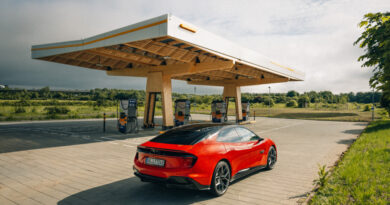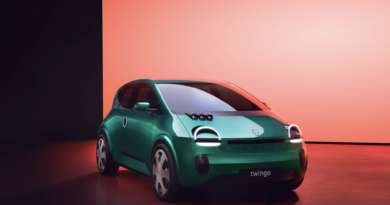2025 Omoda 9 Review: New premium plug-in hybrid takes the fight to Tesla, BYD, Zeekr, Mazda, Volvo – and more
First things first: Omoda was previously a model within the Chery family.
Along with sister brand Jaecoo it’s now been spun out into its own brand and the Omoda 9 is the SUV hero.
Chery will remain the mainstream brand from the Chinese automotive giant (there’s a Tiggo 9 Super Hybrid coming that uses a lot of the hardware from the Omoda 9) whereas Jaecoo will tend towards premium and Omoda more youth-oriented with an emphasis on fashion.
There’s another Chery brand called Lepas coming to Australia in 2026 but that’s yet another stor.
READ MORE: Chery Omoda 9 PHEV price and spec for Australia: Latest Chinese spin-off brand’s debut SUV has big power, big range and a big price
READ MORE: Chery Tiggo 7 and Tiggo 8 to get plugged in as demand for PHEVs grows in Australia
READ MORE: Omoda, Jaecoo the latest new Chinese brands to take on BYD, GWM, Deepal, Zeekr, Leapmotor and XPeng
To be fair, it’s a fine line between Omoda and Jaecoo.
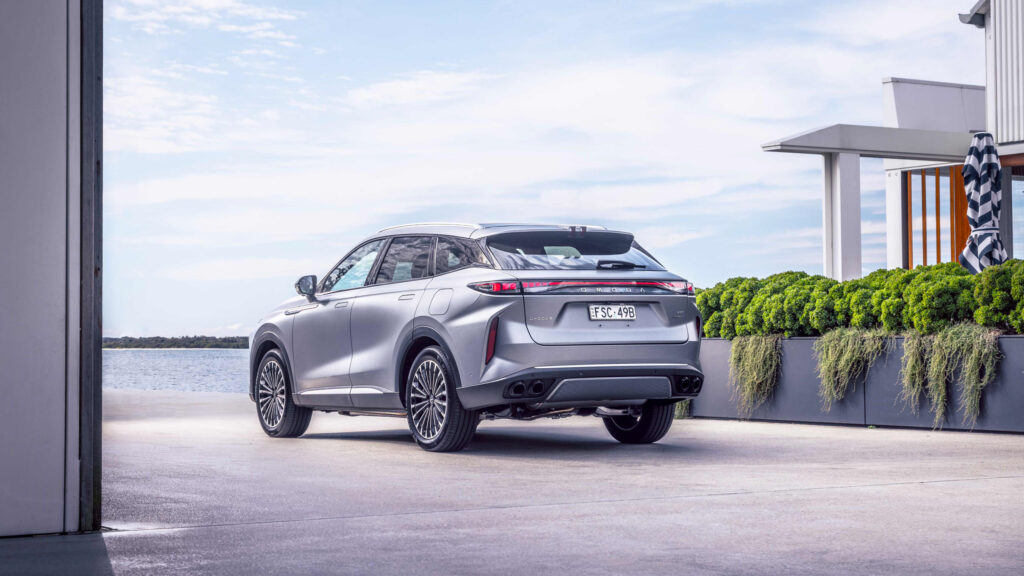
Perhaps the most important thing for would-be owners is knowing that these two new brands are part of a bigger one that’s been kicking goals Down Under.
2025 Omoda 9 price and equipment
The Omoda 9 comes as a one-size-fits-all model known as the Virtue.
We’re getting used to Chinese cars coming packed with gear, but the Omoda 9 takes it a step further.
It comes with 20-inch alloy wheels, head-up display, 360-degree camera, heated steering wheel, panoramic sunroof, powered tailgate, wireless phone charger, ambient lighting, leather trim and heated and ventilated front and rear outboard seats.
The front seats are electronically adjustable in all directions while the rear has an electrically operated backrest angle.

There’s also a Sony sound system with 14 speakers, two of which are in the front headrests.
Under the skin is a plug-in hybrid system that pairs a 1.5-litre four-cylinder turbo engine with three electric motors (two up front, one for the rear).
The two front motors make 75kW/170Nm and 90kW/220Nm and the rear motor makes 175kW/310Nm.
The petrol engine predominantly acts as a generator that produces 105kW/215Nm.
The Omoda 9 gets an eight-year unlimited kilometre warranty with services required every 12 months or 15,000km.
As for rivals, that’s a tricky one.
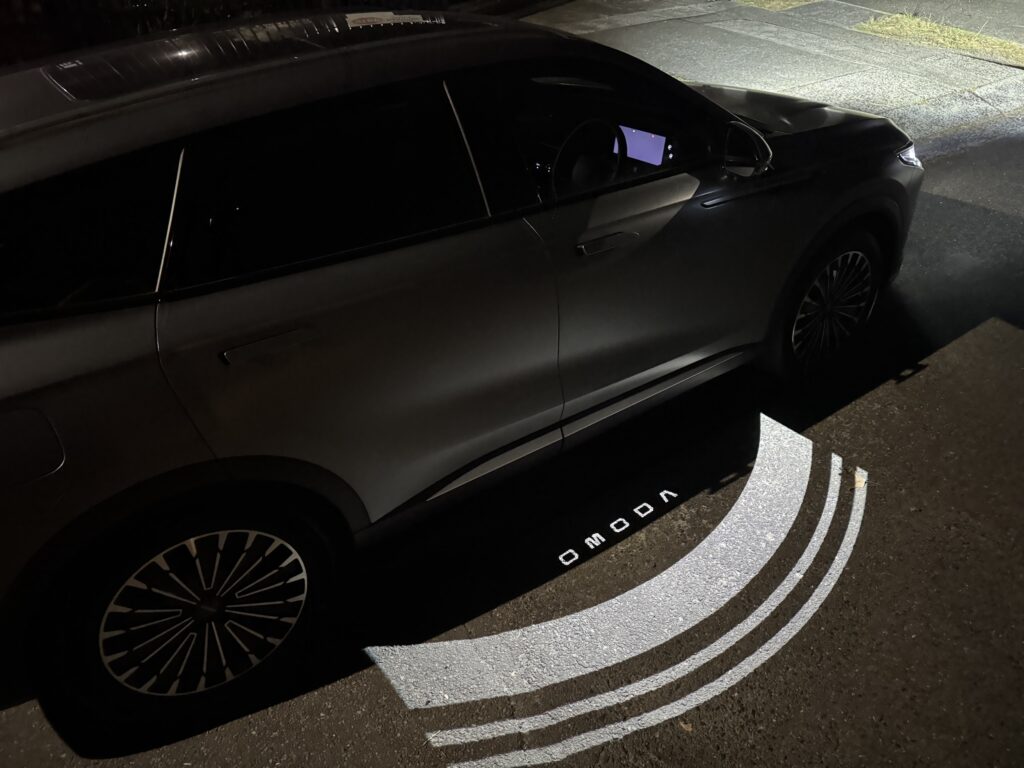
It’s either a large mid-sized SUV or small large SUV. The fact it seats only five people suggests it’s more likely to compete with mid-sizers.
The Tesla Model Y is an obvious competitor, as is anything it competes with including the BYD Sealion 7 and Zeekr 7X.
You could also throw other similarly sized plug-in hybrids into the mix, including the Mazda CX-60 and Volvo XC60.
2025 Omoda 9: What we think
There are flashes of Tesla and wisps of copycat luxury in the Omoda 9.
Door handles pop out as you approach the car and puddle lighting illuminates the road.
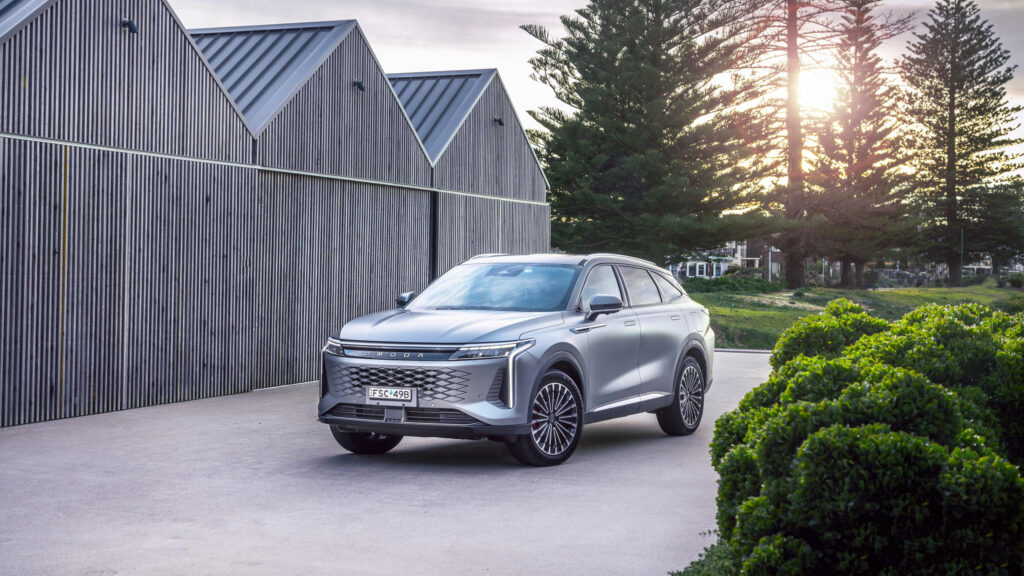
There’s no start button, with everything coming to life once it detects a bum on the driver’s seat.
Once your seatbelt is on the electronic handbrake will automatically release.
Pixels dominate the dash, although we’d like to see a volume dial rather than the buttons arranged in a dial-like circle.
Instead you’re presented with three proper dials in the centre console, one for adjusting the temperature, one for the drive modes (it announces the selected mode every time you adjust it) and one for the fan speed. I reckon most people will adjust the volume more often that they’ll touch the drive mode.
In any mode the Omoda 9 has no shortage of thrust. Omoda claims the 9 can punch out a combined 395kW.
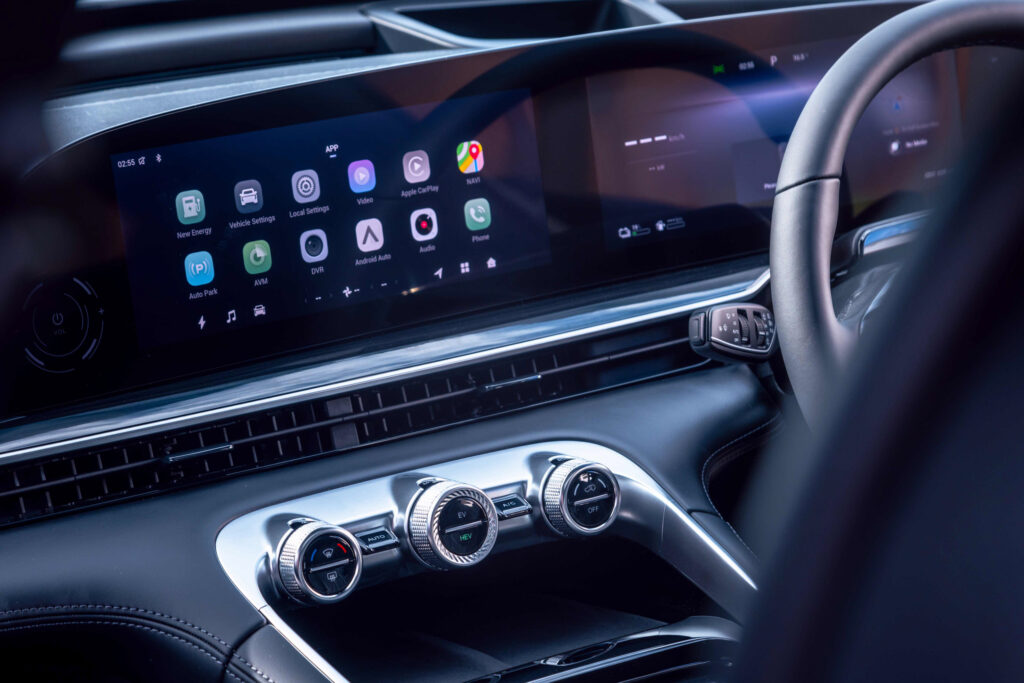
That’s a lot – a base model Porsche 911 Carrera makes 290kW – but it’s tempered by a 2.2-tonne body.
The claimed 0-100km/h time is 4.9 seconds, and it certainly feels like it’d get close to that. There’s a seamless surge that nicely pins occupants back in their seats.
But we also never felt it was making a full 395kW. The power meter in the dash would occasionally flash up 230kW or 240kW when accelerating hard, but we never saw anything remotely close to 395kW.
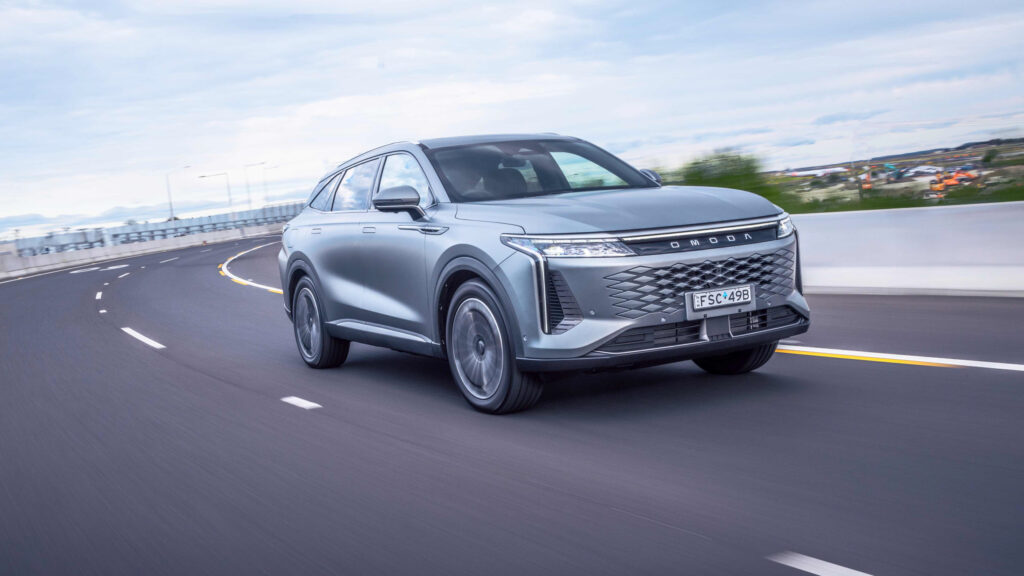
That could in part be because of how it delivers the power.
The three motors and petrol engine feed through an interesting three-speed transmission that engages different power sources depending on the speed and what your right foot is doing.
One thing that’s clear is that the engine does very little driving of the wheels in everyday driving.
In hybrid mode you’ll occasionally hear it whirring or humming away but those engine revs rarely have much to do with how it’s being driven.
Which is fine, making for a car that behaves more like an EV than a regular hybrid.
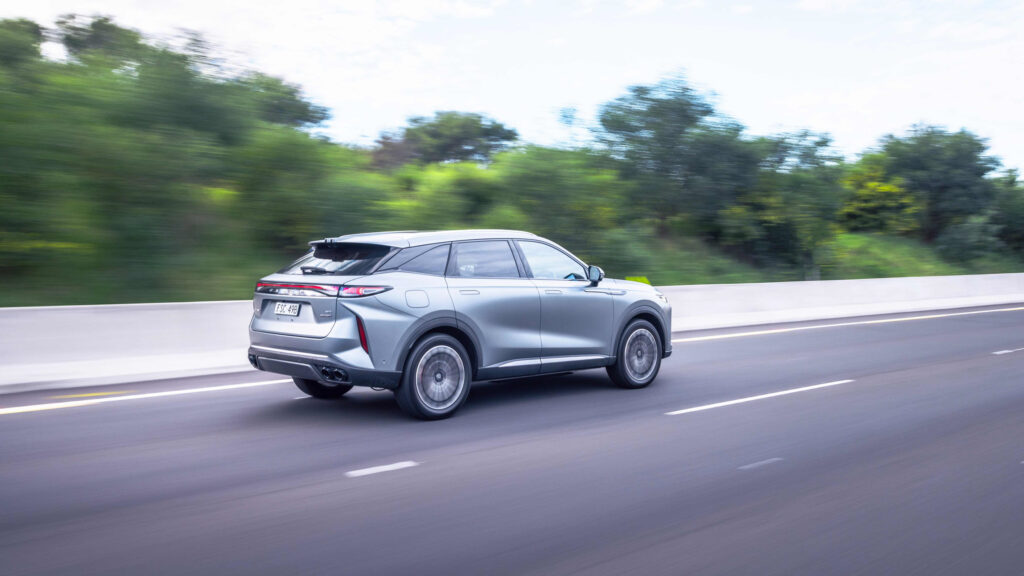
We’d like the throttle response to be more EV-like too. While there’s ample thrust once things get moving, there’s also a delay when you first tramp the throttle, which saps some of the immediacy you normally get in an electric car.
Another gripe is the brakes. They’re effective, but they’re a bit computer game-like in their feel and are overly sensitive, making for some jerky moments around town.
It’s a shame, because there are flashes of goodness elsewhere.
While the suspension is a tad wallowy, sticky Michelin tyres hang on nicely and pair with the all-wheel drive system to make it easy to get the grunt to the ground.
Of course, the PHEV is also about using very little fuel – or in some instances none at all.

It has a 34kWh battery claimed to give it 145km of WLTP range.
We found something like 120km was closer to the money.
Even then, it automatically engaged hybrid mode once the range dropped to 12km.
The engine then kicked in to keep the EV range hovering around 20km.
Be careful not to use full throttle, though, because even if you’ve selected EV mode it automatically wakes the petrol engine, in turn engaging hybrid mode.
That’s a shame because there’s ample grunt from the EV side on its own. And if you can keep the power meter below its red threshold then you’ll still out-drag most other cars in traffic.
That said, there’s a multitude of drive modes to not only adjust the driver feel but also how the hybrid system operates.
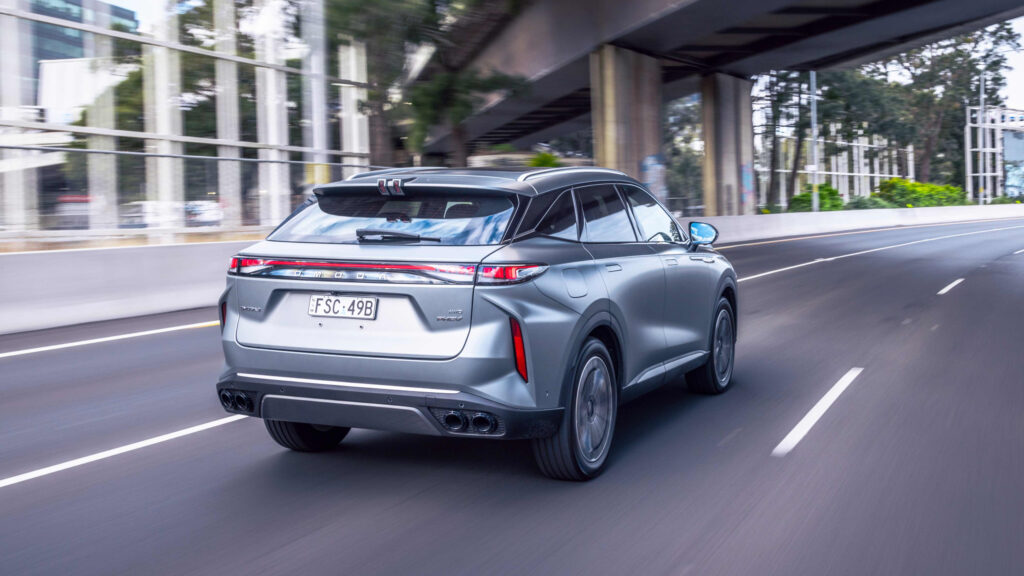
EV+ mode builds on regular EV mode, for example, by allowing you to drive longer in electric mode.
And a Smart mode allows you to optimise fuel efficiency by allowing the car to work out what power source it should use when; that would be the one to use on a long trip, whereas Initial mode (which focuses on EV driving) is best for around town EV running.
Official fuel use is 1.4 litres per 100km, but as with all PHEVs it’s a figure you’ll never achieve.
We had it using more like 5.7L/100km, sometimes more, sometimes less.
Elsewhere, the Omoda has plenty to offer.
It’s spacious and functional up front. Storage is a strong suit.
The large binnacle under the floating centre console is useful and the upper section houses dual phone pockets (only the left one is a wireless charger) as well as dual upholders. Behind those cupholders is a false floor revealing a deeper hidden section.
And the covered centre binnacle is deep and cooled.
The back seat is generous on legroom and despite the sporty-ish roofline also provides adult friendly headroom.
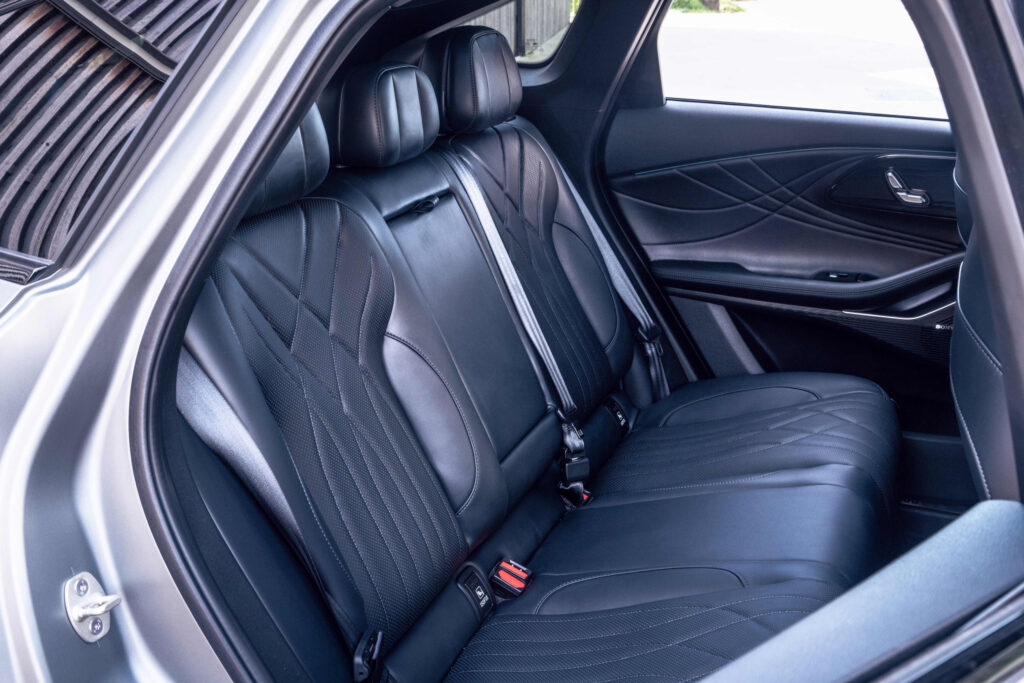
A flat floor means the person in the middle isn’t shortchanged on foot space.
Those in the rear also get electrically adjustable backrests (the control on the door makes it look like you can also adjust the seat base, but that’s fixed).
A 60/40 split-fold allows the high-floored boot to swallow more.
2025 Omoda 9: Verdict
The Omoda 9 plays in an interesting space from a price perspective.
It’s got the gear and glitzy presentation that’s clearly designed to get people to look sideways from traditional premium brands.
But it doesn’t have the badge – and the lack of a third row of seats means some may instead prefer the Chery Tiggo 9 Super Hybrid that uses the same basic PHEV system (albeit with less power).
It’s USP is its plug-in hybrid system that delivers on performance, albeit with caveats.
For someone who wants to tackle some big road trips it’s an interesting electrified alternative.
And while it delivers big (claimed) power, there are EVs that will easily match its pace.
Score: 3.5/5
2025 Omoda 9 price and specifications
Price: $61,990 plus on-road costs
Basics: PHEV, 5 seats, 5 doors, SUV, AWD
Range: 145km (WLTP)
Battery capacity: 34kWh
Battery warranty: 8 years/unlimited km
Energy consumption: 19.0kWh/100km
Drivetrain: 105kW/215Nm 1.5-litre 4-cylinder turbo, 75kW/170Nm front motor (one), 90kW/220Nm front motor (two), 175kW/310Nm rear motor, combined output 315kW/580Nm
AC charging: 6.6kW, Type 2 plug
DC charging: 70kW, CCS combo plug
0-100km/h: 4.9 seconds



